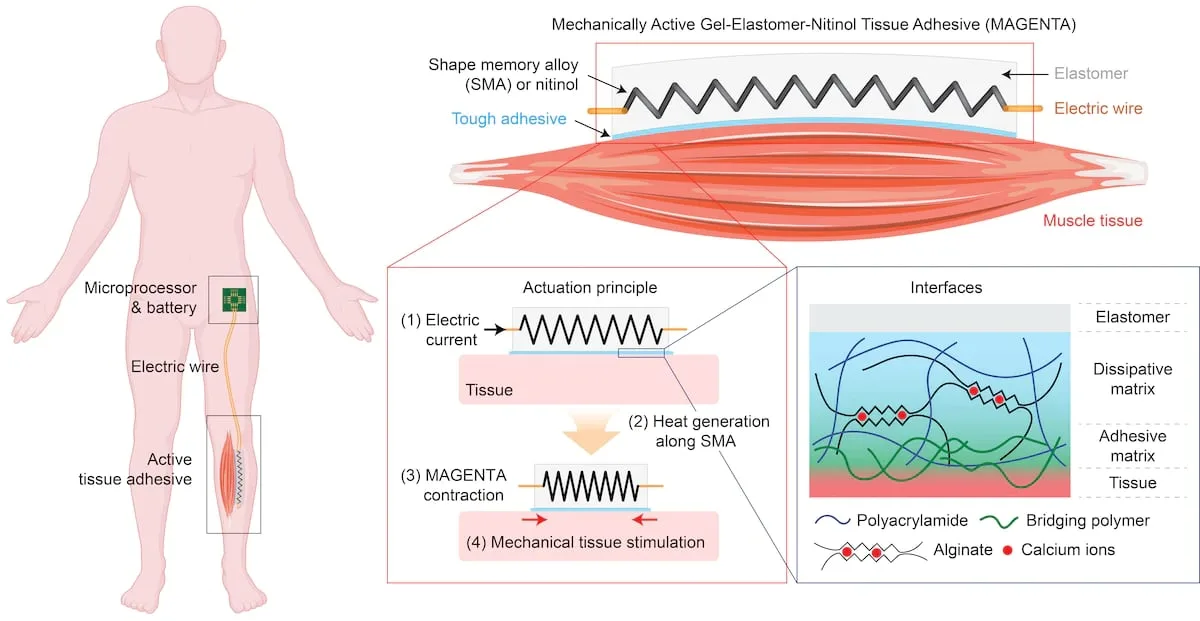Today, muscle atrophy is often unavoidable when you can’t move due to severe injury, old age or diseases like amyotrophic lateral sclerosis (ALS) and multiple sclerosis (MS). However, Harvard researchers see hope in soft robotics that could someday stretch and contract the muscles of patients unable to do so themselves.
The Harvard engineers tested a new mechanostimulation system on mice, successfully preventing or assisting in their recovery from muscle atrophy. The team implanted the “soft robotic device” on a mouse’s hind limb, which they immobilized in a cast-like enclosure for around two weeks. While the control group’s untreated muscles wasted away as expected, the actively stimulated muscles showed reduced degradation. The researchers believe their system can eventually lead to implants helping humans with atrophy.
Its promise stems from its ability to induce a small mechanical muscle strain that mirrors natural stimulation during exercise. Moreover, while keeping atrophy at bay, the device didn’t lead to any severe tissue inflammation or damage.
“There is a good chance that distinct soft robotic approaches with their unique effects on muscle tissue could open up disease or injury-specific mechano-therapeutic avenues,” said David Mooney, Ph.D., the paper’s senior author and Harvard’s Wyss Institute engineering faculty member.

Wyss Institute
Dubbed MAGENTA (short for “mechanically active gel-elastomer-nitinol tissue adhesive”), the anti-atrophy system includes an engineered spring made from nitinol, a shape memory alloy (SMA) that can rapidly actuate when heated. Researchers control the spring with a wired microprocessor unit that determines the frequency and duration of muscle contractions and stretches.
The system also includes an elastomer matrix forming the device’s body and providing insulation for the heated SMA. In addition, a layer of “tough adhesive” keeps MAGENTA aligned with the muscles’ natural movement axis while transmitting stimulation deep into muscle tissue.
“While untreated muscles and muscles treated with the device but not stimulated significantly wasted away during this period, the actively stimulated muscles showed reduced muscle wasting,” said first-author and Wyss Technology Development Fellow Sungmin Nam, Ph.D. “Our approach could also promote the recovery of muscle mass that already had been lost over a three-week period of immobilization, and induce the activation of the major biochemical mechanotransduction pathways known to elicit protein synthesis and muscle growth.”
The team also experimented with a wireless version, using laser light rather than electrical wiring to actuate the SMA spring. Although this approach showed reduced effectiveness due to fat tissue absorbing some of the laser light, the researchers believe this approach still holds potential and warrants further research.
All products recommended by Engadget are selected by our editorial team, independent of our parent company. Some of our stories include affiliate links. If you buy something through one of these links, we may earn an affiliate commission. All prices are correct at the time of publishing.